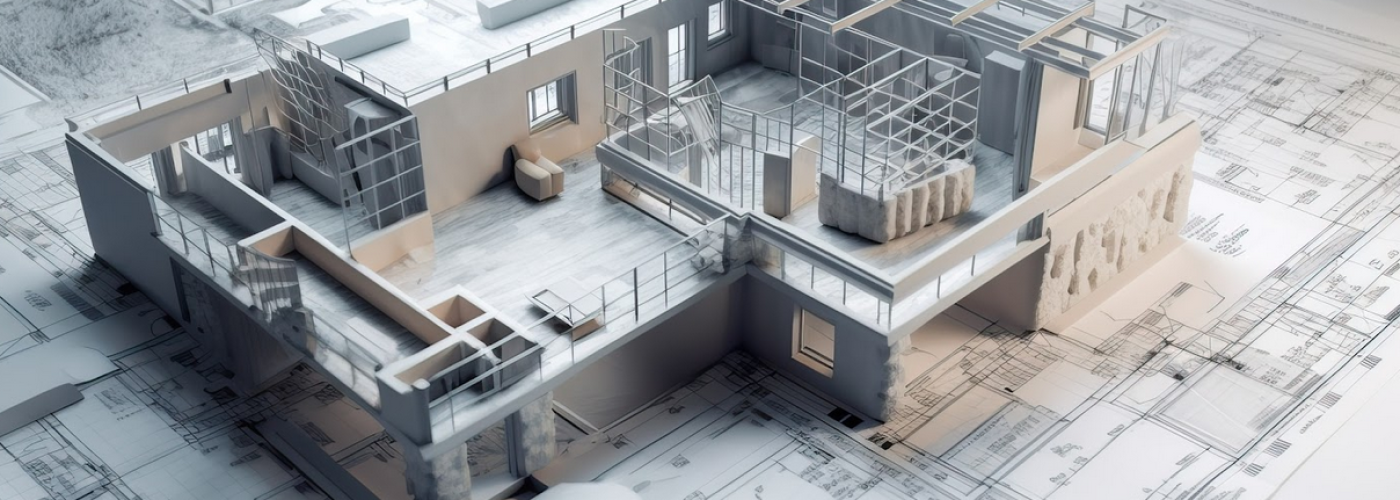Constructing an efficient building requires careful planning and execution from the very beginning of the project. There are many tools and techniques available nowadays that can help optimize building efficiency in the construction process. Implementing these can lead to substantial savings in energy, water, and materials, and operational costs over the structure’s lifetime.
Here are techniques and tools to consider:
- Integrated Design Process (IDP)
The integrated design process aims to enhance building efficiency by involving all project stakeholders from the start and maintaining close collaboration throughout the construction stage. These include architects, engineers, contractors, clients, and any speciality consultants.
By gathering input early on from this diverse group and consistently sharing information, efficiency goals can be well-understood and implemented. Thus, the IDP allows for holistic decision-making focused on optimizing building performance.
- Mobile scaffolding
Mobile scaffolding systems provide flexible and adjustable access for work at all heights. Being modular and movable, they require less material and storage space. Among the top mobile scaffold benefits are versatility, easy of erecting and dismantling, and construction safety.
These scaffolds also have features like stairs and rails for ergonomic and safety benefits. To add, by relocating to optimal positions needed at each construction stage, they maximize workflow efficiency and faster project completion.
- Building Information Modelling (BIM)
BIM software allows for 3D modelling of building plans and incorporates detailed data on materials, measurements, schedules, and more. By serving as a single source of information on the project, it improves coordination and information sharing between teams.
Clash detections enabled in BIM identify issues early on, preventing costly changes later. It also allows testing of design variations easily to strike an optimal balance between aesthetics and efficiency needs. Overall, BIM results in around 50% of both construction time and cost.
- Energy modelling
Energy modelling programs can simulate a building’s expected energy utilization right from the design stage. Factors like building orientation, materials, HVAC systems, and natural lighting can be played around with to create energy-efficient plans.
Energy modelling provides vital data required to make informed decisions, leading to reduced energy usage, fewer emissions, and lower operating expenses through the building’s life cycle.
- High-performance building envelope
The façade or building envelope plays a huge role in minimizing heat gain or losses and meeting efficiency goals. By optimizing insulation, glazing, and shading—based on orientation and climate—envelope performance can be maximized. For example, research indicates that a high-performance building envelope results in over 30% reduction in cooling demand, massively cutting energy costs.
- Construction waste management
Adopting sound construction waste management techniques like sorting waste streams at source to enable reuse, recycling, and recovery diverts over 80% of waste from landfills. Using prefabricated components having lower waste rates also supports construction efficiency. Durable ready-made granite countertops, for instance, can be sourced and installed with minimal on-site fabrication, significantly reducing material waste and contributing to overall project efficiency. These sustainable practices have major economic benefits, too.
- Sustainable construction materials
Recycled materials like fly ash bricks and locally sourced materials minimize associated transportation emissions while supporting local economies. For example, when used wisely, Bamboo lends strength while sequestering carbon over its lifecycle. Low VOC paints and adhesives also maintain healthy indoor air quality.
A wise material selection that considers source, production energy use, and emission is key for green construction.
- Quality control and commissioning
Consistent inspection and testing of building systems’ installation and performance ensures that they operate at peak efficiency as intended over the long run. Air tightness tests, duct leakage tests, and thermal imaging help identify flaws that can degrade efficiency. Commissioning by third-party professionals after system handover provides an unbiased efficiency review.
- Lean construction methods
Practices adopted from lean manufacturing can minimize resource wastage in construction, too. Using just-in-time material deliveries, daily huddles for better planning, and modular construction (with uniform connections) cuts waste while enhancing productivity.
Overall, efficient use of labour, material, and time using lean principles optimizes construction sustainability.
- Green building certifications
Constructing buildings conforming to established green standards serves as a guiding framework to enhance various aspects of efficiency—from sourcing to waste management. The mandatory performance thresholds ensure sustainable operations while international recognition lends reputational benefits.
- Skilled workforce
Having construction workers skilled in building science basics and green construction techniques plays a major role in successfully executing efficiency plans. Investing in robust ecological literacy and energy efficiency-related training for onsite workers pays rich dividends in achieving project goals.
- Use of prefabricated components
Modular construction uses prefabricated components for walls, roofing, MEP systems, etc. Fabricating these offsite enables greater quality control over materials and minimizes wastage. Shifting work away from congested sites also enhances productivity. As per data, the use of prefabricated materials results in over 20%-50% faster project completion.
- Smart water systems
Installing water-efficient plumbing fixtures such as low-flow showerheads, faucets, toilets, and urinals paired with automatic controls curtails indoor water usage considerably with no impact on comfort or functionality. Watershed-sensitive landscaping selections also promote water conservation outdoors.
- Onsite renewable energy systems
Supplementing electricity from the grid using onsite renewable energy harnessed from solar PV panels or small wind turbines reduces the environmental footprint significantly while enhancing energy security and autonomy. With mandatory height relaxations, setback exemptions, and FAR incentives, adding renewables has become very compelling.
- Smart construction technologies
Automated technologies like drones conducting safety inspection surveys without disrupting work progress and unmanned heavy machinery guided remotely enhance productivity while keeping workers out of harm’s way. Moreover, IoT sensors monitoring building systems’ performance provide actionable data to sustain peak efficiency.
In conclusion
Adopting these cutting-edge tools and techniques comprehensively—from project planning to the occupancy stage—ensures the creation of highly efficient buildings with attendant sustainability benefits accruing socially and financially.






